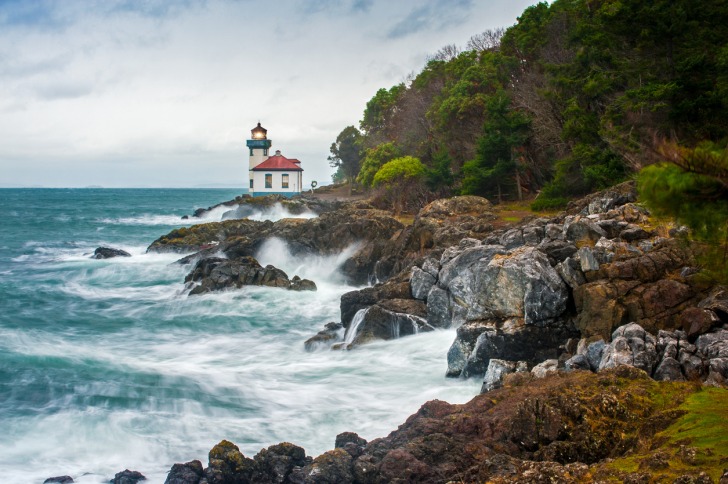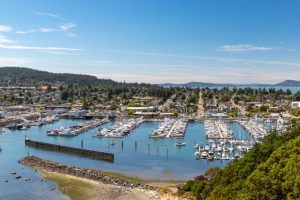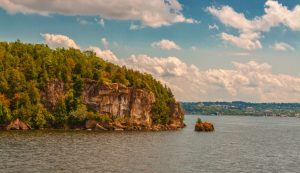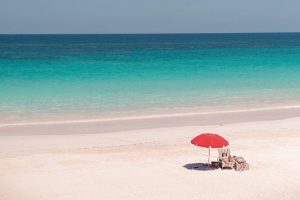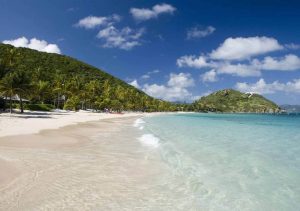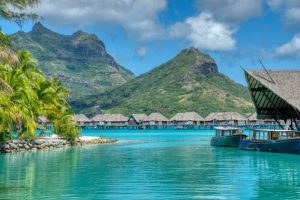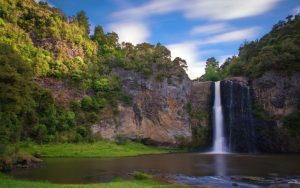 Washington : Safety by City
Washington : Safety by City
- Anacortes
- Bainbridge Island
- Bellevue
- Diablo
- Forks
- Gig Harbor
- Kennewick
- Kent
- Kettle Falls
- Longview
- Mercer Island
- Moses Lake
- Neah Bay
- Ocean Shores
- Olympia
- Port Angeles
- Port Townsend
- Poulsbo
- Pullman
- Quinault
- Renton
- San Juan Islands
- Seabrook
- Seattle
- Sequim
- Snoqualmie
- Spokane
- Spokane Valley
- Tacoma
- Walla Walla
- Wenatchee
- Westport
- Yakima
The San Juan Islands of Washington State sits between Fidalgo Island and British Columbia.
The collection of islands is an archipelago with four main islands for visitors set among 170 or so other islands.
- San Juan Island: The most visited island, featuring the town of Friday Harbor, San Juan Island National Historical Park, and beautiful beaches and parks.
- Orcas Island: Known for its lush landscapes, Moran State Park, and Mount Constitution, offering hiking, biking, and scenic views.
- Lopez Island: Often called the “Friendly Isle,” it’s ideal for cycling, with gentle terrain and charming local art galleries.
- Shaw Island: The smallest of the four main islands served by ferries, known for its quiet, rural atmosphere and beautiful beaches.
The San Juan Islands in Washington have a rich history, marked by the Pig War of 1859, a bloodless conflict between the U.S. and Britain over territorial rights.
This dispute, sparked by the shooting of a British pig by an American farmer, ended peacefully with joint military occupation until the boundary was settled.
Once inhabited by indigenous Coast Salish peoples, the islands became a fishing hub, farming, and tourism hub.
Today, they are known for their natural beauty and maritime heritage.
While the islands have fewer than 18,000 residents, about 650,000 people visit annually.
Whether you want to watch the skyline for eagles or the water for orca whales, this is a wildlife lover’s dream come true.
A short ferry ride makes you feel a million miles away from the hustle of urban life.
Warnings & Dangers in San Juan Islands

OVERALL RISK: LOW
The risk is low, with far below-average crime rates and numerous things to do for all ages and interests.

TRANSPORT & TAXIS RISK: LOW
Honestly, you’ll be amazed at how many ways there are to get to the island and around the islands once you’re there. Rental cars, mopeds, ferry rides, bus systems, charter flights - it’s one of the most accessible islands I’ve ever seen! However, Uber and Lyft rideshare service isn’t an option here. Check out the Getting Around section of the tourism website to get a full list.

PICKPOCKETS RISK: LOW
Two purse snatchings have been reported in the past five years. On top of that, theft rates are far below the national and state averages. The risk is low, but don’t let that stop you from using smart anti-theft steps.

NATURAL DISASTERS RISK: MEDIUM
The San Juan Islands in Washington face several natural disaster risks, including earthquakes due to proximity to fault lines, tsunamis triggered by seismic activity, and wildfires during dry summers. Additionally, landslides can occur on steep slopes, and the islands' isolation can complicate emergency response efforts. This is a medium risk if only to ensure you prepare yourself for the worst.

MUGGING RISK: LOW
No robberies were reported in 2022 or 2023, giving this another low risk. You’re more likely to face off with a fox for the unsealed candy in your purse.

TERRORISM RISK: LOW
This isolated area is mostly preserved land, so the risk of a terrorist attack or related incident is low. However, you should always stay aware of your surroundings and report suspicious activity immediately.

SCAMS RISK: LOW
The police department and local sheriff’s office will post the latest scams on social media. Check the fraud section of each department’s website for more information and to learn about common tactics. A few common scams here target seniors, but they are more focused on the people who live here than tourists.

WOMEN TRAVELERS RISK: LOW
This is another low-risk, but one that begs the reminder to know wilderness, water, and wildlife safety. Be sure to check in with someone before you go on a long hike, paddle, or boat ride and then report when you are back safely.

TAP WATER RISK: LOW
The U.S. has strict standards for tap water per the Safe Water Drinking Act. Communities are required to provide a Water Quality Report (Consumer Confidence Report) once a year by July 1. The risk here is low, but to get a copy of the latest report, you’ll need to call 360-370-7521.
Safest Places to Visit in San Juan Islands
To begin with, we want to ensure you’re researching the right San Juan Islands.
There’s a similarly named place in Alaska.
The tourism website in Washington’s San Juan Islands is VisitSanJuans.com.
Let’s tackle the things to do in San Juan Islands, Washington, one island at a time.
San Juan (sanjuanisland.org)
The ferry brings guests to the bustling waterfront port town of Friday Harbor.
The seaside mix of shops, restaurants, and excursion planning businesses is charming and invigorating.
The San Juan Islands Museum of Art, San Juan Historical Museum, and the Whale Museum are both located here.
Scenic drives circle the island, with access to Fourth of July Beach, San Juan Island National Historical Park, and Cattle Point Lighthouse on the southern tip.
The best whale-watching location is Lime Kiln Point State Park on the island’s west side.
You can see a pod of orcas from the viewing platform or the Lime Kiln Lighthouse.
Roche Harbor is a quaint, historic community on the north end of the island.
This is a great spot for paddling, hiking, and relaxing.
Another section of the National Historical Park is on this side of San Juan.
Orcas (orcasislandchamber.com)
Orcas Island has a port town of Orcas on the southwest side of the horseshoe-shaped island.
Known as the “Gem of the San Juans,” this exciting island brings nature, arts, and history together in an idyllic seaside escape.
The hilly terrain is a perfect challenge for a bike ride around the island, but drivers will love the rolling hills unveiling a new landscape at every turn on “Emerald Island.”
Orcas Island is home to the expansive Moran State Park, home of the highest peak in the San Juans – Mount Constitution at 2,399’.
Deer Harbor is another great town to visit, where visitors are immersed in marine life.
Whale-watching tours, kayaks, vehicle rentals, and boat rentals are all waiting here.
Orcas Island Historical Museums is located in the center of the island, or the top of the horseshoe, with several locations to explore that tell the story of this ancient land.
Lopez Island (lopezisland.com)
Lopez is known as the “Friendly Isle,” and you’ll likely get a wave from passing locals.
Head to Spencer Spit State Park for a peaceful hike with stunning views of the bay and the chance to explore the spit at low tide.
For a touch of history, visit the Lopez Island Historical Museum and learn about the island’s past through intriguing exhibits.
Kayaking around Fisherman Bay provides an intimate look at the local marine life, including seals and eagles.
Afterward, stop by Lopez Village, the island’s quaint hub, for shopping and a meal or snack.
For a serene end to your day, head to Shark Reef Sanctuary.
A short trail leads to rocky bluffs where you can watch sea lions basking and enjoy panoramic ocean views.
The island also has several trails to explore, including Lopez Hill, Iceberg Point, Watmough Bay, and Fisherman Bay Preserve: The Spit.
Shaw Island
This island isn’t developed much and sits between the other three islands.
The biggest attraction here is Shaw County Park.
While it’s open year-round, you’ll want reservations for camping in the summer.
Places to Avoid in San Juan Islands
Dangerous neighborhoods and bad parts of town (islands) don’t exist here.
The biggest safety concern outside of natural risks would be if you ended up trespassing on private property.
Avoid trying to visit more than two islands in one day, and even that is stretching it if San Juan is one of them.
Inter-island ferries can’t be reserved.
Between 10 am and 3 pm, the ferries can be packed.
Also, put a three-hour distance between your ferry arrival time and any scheduled tours or excursions to allow for potential ferry delays.
One thing to know is that this community was at the forefront of the Leave No Trace Principles.
The Leave No Trace principles are guidelines designed to help outdoor enthusiasts minimize their impact on the environment.
Here is a summary of the seven principles:
- Plan Ahead and Prepare: Ensure your trip is safe and enjoyable by researching the area you plan to visit. Understand regulations and special concerns, schedule your trip to avoid times of high use, and prepare for extreme weather or emergencies.
- Travel and Camp on Durable Surfaces: Stick to established trails and campsites to prevent erosion and damage to vegetation. Camp at least 200 feet away from lakes and streams and use existing camp spots to minimize your impact.
- Dispose of Waste Properly: Pack out all trash, leftover food, and litter. Properly dispose of human waste by digging a cat hole 6-8 inches deep at least 200 feet from water, trails, and camp. Pack out toilet paper and hygiene products.
- Leave What You Find: Preserve the past by examining but not touching cultural or historic structures and artifacts. Leave rocks, plants, and other natural objects as you find them. Avoid introducing or transporting non-native species.
- Minimize Campfire Impact: Use a lightweight stove for cooking and a candle lantern for light. When fires are permitted, use established fire rings, fire pans, or mound fires. Keep fires small and burn all wood and coals to ash, which should be dispersed when cool.
- Respect Wildlife: Observe wildlife from a distance and avoid feeding them. Store food and trash securely to prevent animals from obtaining human food. Control pets at all times or leave them at home.
- Be Considerate of Other Visitors: Respect other visitors and protect the quality of their experience. Yield to other users on the trail, camp away from trails and other visitors, and keep noise levels down.
This isn’t just a suggestion on the San Juan Islands; it’s a way of life.
At some points, the principles overlap with laws, like not feeding wildlife.
Safety Tips for Traveling to San Juan Islands
- Instead of having different law enforcement agencies for the various islands, the San Juan County Sheriff’s Office covers the archipelago. Since there are several agencies named San Juan County in America, I wanted to give you the right Facebook page to follow: @San-Juan-County-Sheriffs-Office-100069112903899. Call (360) 378-4151 to ask any specific safety questions.
- Visit the website islandsready.org to get emergency management plan information for your visit. The emergency management organization in the county produces this page. The page lists all the ways you can get emergency notifications about severe weather or public safety threats, but the best ways are by signing up for Island Alerts and following them on Facebook @sanjuandem or X @sjcdem.
- If you see any suspicious activity that isn’t urgent, you can place an anonymous tip by texting the keyword SJCSO and your tip to 847411 (tip411). You can also choose to download the Tip411 app.
- Since the ferry is the main way to get here, you want to sign up for Ferry Alert through the Washington Department of Transportation website. Look for WSF Rider Alert App Signup. You can choose to get email or text message alerts. Be sure to book ferry tickets to the San Juan Islands in advance to guarantee a spot.
- Whether you’re walking, biking, or driving on the island, respect others sharing the road with you. Most roads here are two lanes with no bike lane, shoulder, or sidewalk. There are no stoplights anywhere on the island, so obey road signs.
- Styrofoam and single-use plastic bags are banned on the islands. Bring reusable water bottles and utensils. Be intentional with the products you pack, like choosing a non-toxic shampoo and body wash.
- Rainfall is the source of tap water here. That means the bulk of the year’s water is gathered between November and April. It’s important to conserve water as much as you can here. Limit showers to 3-5 minutes.
- The water temperature of the sea is around 50 degrees year-round. It would take just five minutes for hypothermia to set in if you aren’t wearing a wetsuit. Wear a life vest and get a crash course in San Juan Islands water safety through the state’s Department of Fish & Wildlife.
- Check the Shellfish Safety Map on the county’s website to see if there are advisories, warnings, or closures on the recreational shellfishing beaches. A toxin that can gather in the shellfish can cause a serious health issue known as Paralytic Shellfish Poisoning. Program this number into your phone as well – 1-800-562-5632. That’s the Shellfish Safety Hotline, open 24 hours.
- Do not feed or provide water for any of the wild animals on the island. Even if an adorable fox approaches you, give them space. Not only is there a safety hazard for you and the wildlife, but it’s against federal law to feed, bait, or even disturb these animals. If you notice an injured animal, don’t try to help. Call 1-800-562-8832 to get a wildlife officer on the scene.
So... How Safe Is San Juan Islands Really?
Going back to 2015, the San Juan Islands see about nine to 10 violent crimes a year.
That’s a low crime rate for just the population, but it becomes even lower when you factor in the 650,000 visitors each year.
Over the past five years, just four victims of violent crimes were strangers to their assailants.
That lowers the risk of a random act of violence even more.
The theft rate is almost three times lower than the national average, and that’s before tourist numbers are factored in.
Plus, 56% of violent crimes over the past five years were in private homes.
The majority of thefts fall into the “Other” category, which can be anything from a stolen ATM to a lawnmower theft in a yard.
Even trying to find anecdotal headlines about crime or concerns on any of the San Juan Islands is challenging, with search results going back to 2018 on the first page of examples.
The only caution I would give is that you shouldn’t let such a low crime rate give you a false sense of safety.
Use common sense, stay aware of your surroundings, and understand the weather and wilderness personal safety steps.
How Does San Juan Islands Compare?
| City | Safety Index |
|---|---|
| San Juan Islands | 83 |
| Baltimore | 56 |
| Boston | 67 |
| Washington DC | 56 |
| New York City | 67 |
| Detroit | 56 |
| San Diego | 67 |
| Calgary (Canada) | 82 |
| Buenos Aires (Argentina) | 60 |
| Vancouver (Canada) | 82 |
| Cordoba (Argentina) | 61 |
| Toronto (Canada) | 81 |
| Melbourne (Australia) | 80 |
Useful Information

Visas
All international visitors need either a visa defining the purpose of the trip (tourist, work, school, etc.) or a visa waiver. Start the process using the Visa Wizard module on the U.S. State Department website. Also, your passport must be valid for at least six months after your trip, or you’ll need to apply for a new one. Check with the Canada Border Services Agency for requirements to visit that country if you’re planning to travel across the border.

Currency
Only the U.S. Dollar (USD) is accepted in the United States. International airports usually have a currency exchange desk on site, while regional airports won’t. Your home bank offers the lowest fees. For those using credit cards, check to see if there’s a foreign transaction fee. Credit cards, not debit cards, offer the best fraud protection.

Weather
The San Juan Islands have mild, temperate weather year-round. Summers (June-August) are warm and dry, with temperatures in the 70s (°F). Winters (December-February) are cool and rainy, with temperatures in the 40s-50s (°F). In spring and fall, moderate rainfall and temperatures occur in the 50s-60s (°F). Pack layers, waterproof clothing, and sturdy shoes for variable conditions. Since the islands are in the rain shadow, even the rainy season isn’t that big of a deal.

Airports
Seattle Tacoma International Airport (SEA) is the closest and largest commercial airport in the region. It’s 95 miles from the ferry dock in Anacortes to the SEA. The ferry ride time varies depending on which island you’re on. Check out the Island Airporter website to find out about airport shuttle information.

Travel Insurance
Travel insurance protects the cost of baggage loss/theft, delays, cancelations, and emergency health issues. Rental car insurance should include roadside assistance and uninsured motorist coverage. Comprehensive insurance offers the best peace of mind.
San Juan Islands Weather Averages (Temperatures)
Average High/Low Temperature
| Temperature / Month | Jan | Feb | Mar | Apr | May | Jun | Jul | Aug | Sep | Oct | Nov | Dec |
|---|---|---|---|---|---|---|---|---|---|---|---|---|
| High °C | 8 | 9 | 11 | 14 | 17 | 20 | 22 | 22 | 20 | 14 | 10 | 7 |
| Low °C | 3 | 2 | 4 | 5 | 7 | 9 | 10 | 10 | 9 | 7 | 4 | 2 |
| High °F | 46 | 48 | 52 | 57 | 63 | 68 | 72 | 72 | 68 | 57 | 50 | 45 |
| Low °F | 37 | 36 | 39 | 41 | 45 | 48 | 50 | 50 | 48 | 45 | 39 | 36 |
Washington - Safety by City
| City | Safety Index |
|---|---|
| Anacortes | 82 |
| Bainbridge Island | 85 |
| Bellevue | 84 |
| Diablo | 78 |
| Forks | 85 |
| Gig Harbor | 75 |
| Kennewick | 40 |
| Kent | 42 |
| Kettle Falls | 78 |
| Longview | 82 |
| Mercer Island | 82 |
| Moses Lake | 46 |
| Neah Bay | 77 |
| Ocean Shores | 79 |
| Olympia | 57 |
| Port Angeles | 72 |
| Port Townsend | 81 |
| Poulsbo | 79 |
| Pullman | 79 |
| Quinault | 82 |
| Renton | 70 |
| San Juan Islands | 83 |
| Seabrook | 78 |
| Seattle | 55 |
| Sequim | 77 |
| Snoqualmie | 78 |
| Spokane | 74 |
| Spokane Valley | 62 |
| Tacoma | 38 |
| Walla Walla | 72 |
| Wenatchee | 80 |
| Westport | 78 |
| Yakima | 62 |
